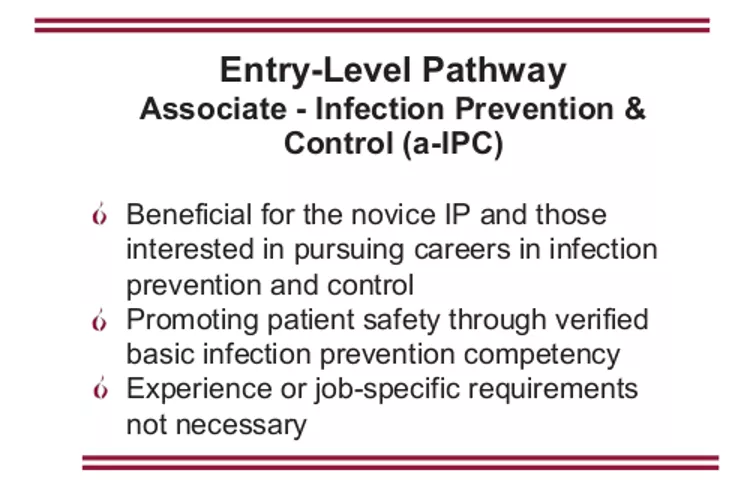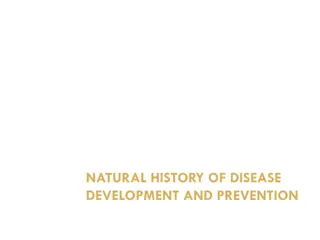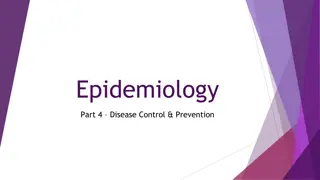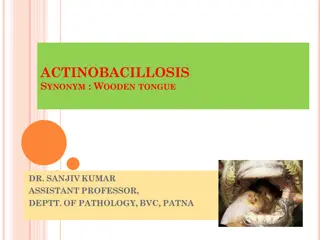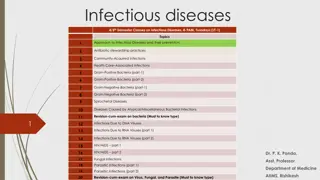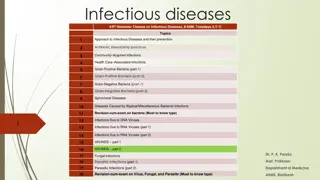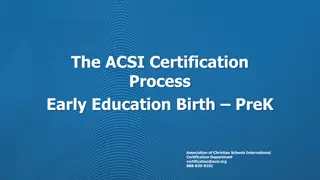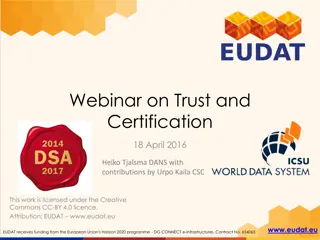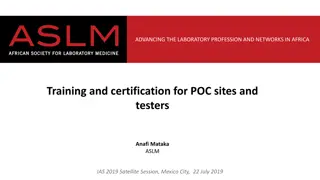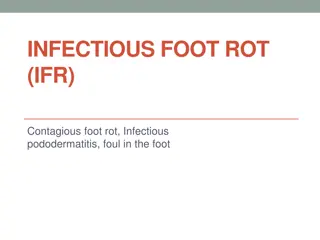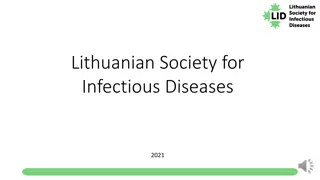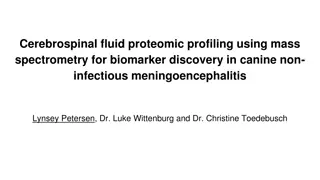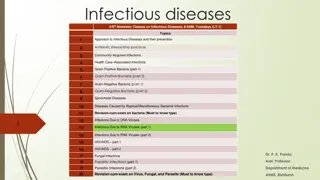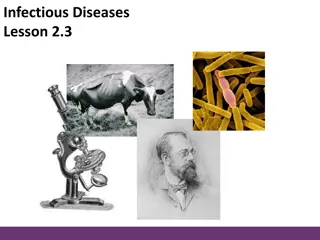Comprehensive Guide to Certification in Infectious Disease Management
Dive into the world of infectious disease management certification with this comprehensive guide covering exam topics such as identifying infectious disease processes, surveillance, prevention/control strategies, employee health, and management/communication skills. Prepare yourself to excel in your certification journey with in-depth insights and practical knowledge.
Download Presentation

Please find below an Image/Link to download the presentation.
The content on the website is provided AS IS for your information and personal use only. It may not be sold, licensed, or shared on other websites without obtaining consent from the author. Download presentation by click this link. If you encounter any issues during the download, it is possible that the publisher has removed the file from their server.
E N D
Presentation Transcript
Preparing for Certification D. Kyle Willey, BS CIC
What is on the Exam? Identification of Infectious Disease Processes (22 items) Interpret diagnostic and laboratory reports Practices for specimen collection, handling, and storage Correlate clinical s/s with infectious disease processes Differentiate colonization, infection, and contamination Differentiate prophylactic, empiric, and therapeutic uses of antimicrobials
What is on the Exam? Surveillance and Epidemiologic Investigation (24 items) Design of Surveillance Systems Collection and Compilation of Surveillance Data Interpretation of Surveillance Data Outbreak Investigation
What is on the Exam? Preventing/Controlling the Transmission of Infectious Agents (25 items) Develop evidence-based/informed infection prevention and control policies and procedures Collaborate with relevant groups and agencies in planning community/facility responses to biologic threats and disasters Identify and implement infection prevention and control strategies
What is on the Exam? Employee/Occupational Health (11 items) Develop screening and immunization programs Evaluate data and develop work restriction recommendations related to communicable diseases and/or exposures Recognize healthcare personnel who may represent a transmission risk to patients, coworkers, and communities Assess risk of occupational exposure to infectious diseases (e.g., Mycobacterium tuberculosis, bloodborne pathogens)
What is on the Exam? Management and Communication (13 items) Infection Prevention program planning Communication and Feedback Evaluate and facilitate compliance with accreditation standards/regulatory requirements Quality Performance Improvement and Patient Safety
What is on the Exam? Education and Research (11 items) Education Assess needs, develop goals and measurable objectives Prepare, present, or coordinate educational content that is appropriate for the audience Research Conduct a literature review Critically appraise the literature Facilitate incorporation of applicable research findings into practice
What is on the Exam? Environment of Care (14 items) Elements important for a safe care environment Assess infection risks of design, construction, and renovation Evaluation and monitoring of environmental cleaning and disinfection Selection and evaluation of environmental disinfectant products
What is on the Exam? Cleaning, Sterilization, Disinfection, Asepsis (15 items) Identify and evaluate appropriate cleaning, sterilization and disinfection practices Collaborate with others to assess products under evaluation for their ability to be reprocessed Identify and evaluate critical steps of cleaning, high level disinfection, and sterilization
Sample Test Questions 1. A 55-year-old male who is admitted to an emergency department with a high fever and myalgias rapidly develops respiratory distress that requires ventilation. When questioning the family, the Infection Preventionist (IP) learns that the only change in his routine activities was cleaning out an abandoned storage shed near the family home approximately 2 weeks previously. Which of the following infectious diseases MOST likely results in these symptoms? A. Hantavirus B. Plague C. Lyme disease D. Q Fever Discussion: 1. What are the important clues in the question? 2. How are each transmitted? 3. What are the symptoms?
Sample Test Questions 2. A 68-year-old male is admitted for progressive stroke and pneumonia. He has a low-grade fever and had previously been admitted on a bi-monthly basis. He has been diagnosed with Candida esophagitis. Which of the following is the MOST likely underlying condition? A. tuberculosis (TB) B. chlamydial infection C. cytomegalovirus (CMV) D. HIV Discussion: 1. What symptoms give the best clues? 2. How do each present as chronic conditions?
3. A patient is admitted for aggressive chemotherapy and on hospital day 13, the patient develops high fevers and consolidation on chest x-ray. A chest CT shows left lower lobe patchy infiltrate with dense central consolidation. Which of the following is the most likely cause? A. Aspergillus B. Legionella C. Candida tropicalis D. Nocardia asteroids Discussion: 1. What factors go into the response? 2. What are the s/s? 3. What is the BEST match for unilateral infiltrate?
Sample Test Questions 4. Over a 3 month period, eight patients were diagnosed with Legionella pneumonia. The location of the patients were: 4 in the liver transplant unit, 2 in the trauma unit, and 1 each in the pediatric and psychiatric unit. To control Legionella in this facility, the ICP should: Discussion: 1. What is the problem? 2. Do the different types of units matter? 3. What risk factors are involved? A. Review engineering department s schedule for changing the HEPA filters Discontinue the use of the air conditioners on the affected units Focus surveillance on pediatric and psychiatric units Culture water supplies from the affected units B. C. D.
Sample Test Questions 5. A pediatric patient has had erythema of the cheeks for 2 weeks, particularly when in sunlight. A PCR test for B19 DNA is found positive by laboratory study. This child MOST likely has Discussion: 1. What is the best clue? 2. What s/s are present? 3. How do each disease typically present? A. Lyme disease B. Fifth disease C. Leprosy D. Streptobacillosis
Sample Test Questions 6. A patient who has undergone cardiopulmonary resuscitation is subsequently diagnosed as having meningococcal meningitis. Which of the following employees should receive prophylaxis? A. anesthetist who performed endotracheal intubation physician who administered intravenous medications technician who performed the EKG nurse who performed chest compressions Discussion: 1. Focus on the actions. What risk factors are involved? 2. Rank the risk from highest to lowest. B. C. D.
Sample Test Questions 7. Which of the following organisms is a spiral-shaped rod associated with gastroenteritis? Discussion: 1. Are there any we can exclude? 1. One of these things is not like the other. One of these things does not belong A. Shigella sonnei B. Campylobacter jejuni C. Escherichia coli D. Salmonella enteritidis
Sample Test Questions Follow-up. Which of the following diseases is caused by a spiral-shaped bacterium? 1. Leptospirosis 2. Lyme Disease 3. Relapsing Fever 4. Syphilis Discussion: 1. Are there any we know that we can exclude? 2. Are there any we know that we can include? A. 2 and 3 B. 1 and 4 C. All of the above D. None of the above



